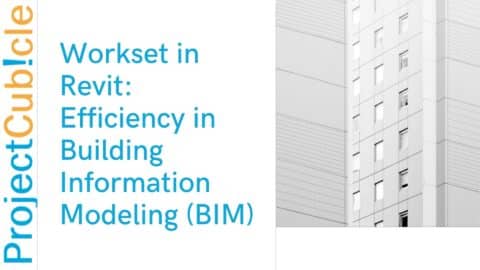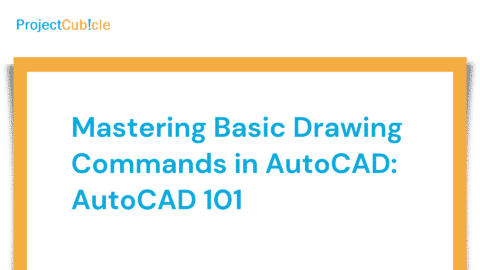Advantages and Disadvantages of AutoCAD: Exploring the Pros and Cons
Introduction
AutoCAD is a powerful computer-aided design (CAD) software that has revolutionized the field of engineering and architecture. With its extensive features and capabilities, AutoCAD has become an indispensable tool for professionals in these industries. In this article, we will delve into the advantages and disadvantages of AutoCAD, exploring both the pros and cons to give you a comprehensive understanding of this widely used software.
Table of Contents
Advantages of AutoCAD
1. Enhanced Productivity
AutoCAD offers a wide range of features and tools that significantly enhance productivity. The software allows users to create complex designs with ease, making it a valuable asset for engineers and architects. With AutoCAD, tasks that would typically take hours or even days to complete manually can now be accomplished in a fraction of the time, thereby increasing efficiency and productivity.
2. Precision and Accuracy
One of the major advantages of AutoCAD is its ability to deliver precise and accurate designs. The software allows users to create designs with utmost precision, ensuring that every measurement and detail is accurately represented. This level of accuracy is crucial in engineering and architecture, where even a small error can have significant consequences. AutoCAD’s precision tools enable professionals to create flawless designs, eliminating the risk of costly mistakes.
3. 2D and 3D Modeling Capabilities
AutoCAD offers both 2D and 3D modeling capabilities, providing users with a versatile platform to create designs in various dimensions. Whether you need to create simple 2D sketches or complex 3D models, AutoCAD has the tools to accommodate your requirements. The software allows for a seamless transition between 2D and 3D modes, enabling users to visualize their designs from different perspectives.
4. Parametric Design
Another notable advantage of AutoCAD is its parametric design functionality. This feature allows users to establish relationships between different elements of a design, such as dimensions and constraints. With parametric design, any changes made to one part of the design automatically update all related components, ensuring consistency throughout the project. This feature not only saves time but also reduces the chances of errors caused by manual updates.
5. Collaboration and Sharing
AutoCAD facilitates collaboration and sharing among team members, making it an ideal software for large-scale projects. The software allows multiple users to work on the same project simultaneously, with real-time updates and synchronization. This promotes seamless communication and collaboration, enhancing overall project efficiency. Additionally, AutoCAD provides various file formats for sharing designs with clients and stakeholders, ensuring compatibility and ease of access.
6. Extensive Customization
AutoCAD offers extensive customization options, allowing users to tailor the software according to their specific needs and preferences. Users can create custom tool palettes, modify interface elements, and even write custom scripts using AutoLISP (AutoCAD’s built-in programming language). This flexibility enables professionals to streamline their workflow and work more efficiently, thereby maximizing their productivity.
Disadvantages of AutoCAD
1. Steep Learning Curve
One of the primary disadvantages of AutoCAD is its steep learning curve. Due to its extensive features and capabilities, mastering AutoCAD requires significant time and effort. Beginners may find it challenging to grasp the intricacies of the software, leading to a slow start. However, with dedication and practice, individuals can overcome this hurdle and become proficient in using AutoCAD.
2. Costly Software
AutoCAD is a premium software and comes with a hefty price tag. The cost of acquiring AutoCAD licenses and ongoing subscriptions can be a deterrent for individuals or small businesses with limited budgets. The high cost of the software may make it less accessible for those who are just starting or have budget constraints. However, it is important to consider the long-term benefits and return on investment that AutoCAD can offer in terms of increased productivity and efficiency.
3. System Requirements
AutoCAD is a resource-intensive software that requires a powerful computer system to run smoothly. The software’s demanding system requirements, including processor speed, memory, and graphics capabilities, may pose a challenge for users with older or less advanced hardware. Upgrading or investing in a new computer system can add to the overall cost of using AutoCAD.
4. Complexity and Overwhelming Interface
With its vast array of tools and features, AutoCAD can be overwhelming for beginners. The complexity of the software’s interface and the extensive range of options available may initially confuse and intimidate users who are new to CAD software. It takes time and practice to become familiar with the interface and effectively utilize all the tools that AutoCAD has to offer.
5. Compatibility Issues
While AutoCAD supports various file formats for import and export, compatibility issues can still arise when collaborating with users of different CAD software. Some features and functionalities may not translate seamlessly between different software platforms, leading to potential compatibility issues. It is important to ensure compatibility with clients, colleagues, and stakeholders when sharing AutoCAD files.
6. Dependency on Computer Systems
AutoCAD is software that heavily relies on computer systems and hardware performance. Any technical issues or system failures can disrupt workflow and result in downtime. In such cases, users may experience delays or loss of work until the issues are resolved. Maintaining a reliable and robust computer system is crucial to minimize the risk of interruptions.
Frequently Asked Questions (FAQs)
FAQ 1: Is AutoCAD only used for engineering and architecture?
Answer: While AutoCAD is widely used in the fields of engineering and architecture, it has applications in various other industries as well. It is utilized in mechanical design, electrical design, interior design, and even in the gaming and entertainment industries.
FAQ 2: Can AutoCAD files be easily shared with non-AutoCAD users?
Answer: Yes, AutoCAD supports various file formats such as DWG, DXF, and PDF, which can be easily shared with non-AutoCAD users. These file formats ensure compatibility and allow others to view and review the designs without requiring the AutoCAD software.
FAQ 3: Does AutoCAD have any built-in collaboration features?
Answer: Yes, AutoCAD offers collaboration features that enable multiple users to work on the same project simultaneously. Users can view real-time updates, make comments, and track changes, facilitating effective collaboration and communication among team members.
FAQ 4: Can AutoCAD run on Mac computers?
Answer: Yes, AutoCAD is available for both Windows and Mac operating systems. Autodesk, the company behind AutoCAD, provides a version specifically designed for Mac users, ensuring compatibility and functionality on Mac computers.
FAQ 5: Is AutoCAD suitable for small businesses or individuals?
Answer: AutoCAD’s suitability for small businesses or individuals depends on their specific needs, budget, and level of expertise. While the software offers extensive features and capabilities, the high cost and steep learning curve may pose challenges for some. However, there are alternatives and more affordable CAD software options available for those with limited resources.
FAQ 6: Can AutoCAD be used for 3D printing?
Answer: Yes, AutoCAD can be used for 3D printing. The software supports 3D modeling and provides tools for creating intricate and complex designs suitable for 3D printing. AutoCAD allows users to export their designs in file formats compatible withmost 3D printers, enabling seamless integration between the software and the 3D printing process.
Conclusion
AutoCAD is a powerful CAD software that offers numerous advantages for professionals in the fields of engineering and architecture. The software enhances productivity, accuracy, and collaboration while also providing customization options and 2D/3D modeling capabilities. However, AutoCAD has disadvantages, such as a steep learning curve, high cost, and system requirements. It is important for individuals and businesses to carefully consider their specific needs and resources before investing in AutoCAD.
In conclusion, AutoCAD remains a top choice for professionals seeking efficient and precise design solutions. With its rich features and extensive capabilities, AutoCAD continues to play a vital role in shaping the world of engineering and architecture.
Projectcubicle Recommend
- “Human Resources Dashboard Create in Excel: Streamline Your HR Processes”
- Learn how to create a human resources dashboard in Excel to streamline HR processes.
- “Export Excel into PDF: Simplify Your Data Sharing Process”
- Discover how to export Excel files into PDF format to simplify data sharing.
- “Exponents in Excel: Powering Up Your Formulas”
- A comprehensive guide on using exponents in Excel to enhance your formulas.
- “Exponential Smoothing in Excel: A Comprehensive Guide to Forecasting Techniques”
- Learn about exponential smoothing in Excel and explore forecasting techniques.
Hello, I’m Cansu, a professional dedicated to creating Excel tutorials, specifically catering to the needs of B2B professionals. With a passion for data analysis and a deep understanding of Microsoft Excel, I have built a reputation for providing comprehensive and user-friendly tutorials that empower businesses to harness the full potential of this powerful software.
I have always been fascinated by the intricate world of numbers and the ability of Excel to transform raw data into meaningful insights. Throughout my career, I have honed my data manipulation, visualization, and automation skills, enabling me to streamline complex processes and drive efficiency in various industries.
As a B2B specialist, I recognize the unique challenges that professionals face when managing and analyzing large volumes of data. With this understanding, I create tutorials tailored to businesses’ specific needs, offering practical solutions to enhance productivity, improve decision-making, and optimize workflows.
My tutorials cover various topics, including advanced formulas and functions, data modeling, pivot tables, macros, and data visualization techniques. I strive to explain complex concepts in a clear and accessible manner, ensuring that even those with limited Excel experience can grasp the concepts and apply them effectively in their work.
In addition to my tutorial work, I actively engage with the Excel community through workshops, webinars, and online forums. I believe in the power of knowledge sharing and collaborative learning, and I am committed to helping professionals unlock their full potential by mastering Excel.
With a strong track record of success and a growing community of satisfied learners, I continue to expand my repertoire of Excel tutorials, keeping up with the latest advancements and features in the software. I aim to empower businesses with the skills and tools they need to thrive in today’s data-driven world.
Suppose you are a B2B professional looking to enhance your Excel skills or a business seeking to improve data management practices. In that case, I invite you to join me on this journey of exploration and mastery. Let’s unlock the true potential of Excel together!
https://www.linkedin.com/in/cansuaydinim/










